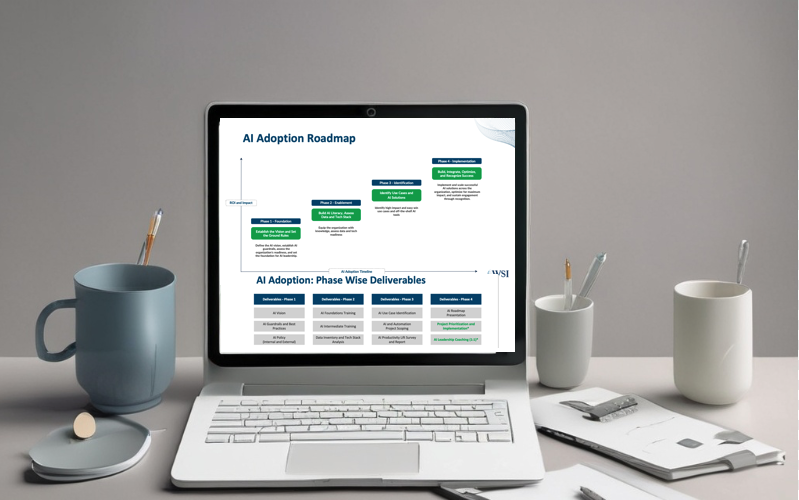
In the boardrooms of broadband operators and retail-focused technology manufacturers, one phrase echoes with increasing urgency: “We need to do something with AI.” The pressure to act is real, but acting without strategy is risky.
The truth is this: AI isn’t a side project, a shiny tool, or a competitive checkbox. It’s a transformational capability that demands a well-thought-out roadmap, pragmatic guardrails, and a positive commitment to empowering employees—not replacing them.
Too many organizations jump into AI from the bottom up—experimenting in silos, chasing productivity gains without tying efforts to business strategy. For companies with complex operations—like broadband service providers or tech-forward retailers—this can lead to fragmentation and wasted resources.
Instead, start at the top:
AI isn’t the strategy. It’s a force multiplier for strategy.
A clear AI roadmap acts as a compass in a fast-moving landscape. It prioritizes use cases, sets realistic milestones, and outlines the skills, infrastructure, and change management required. Without it, experimentation stalls or creates internal friction.
Your AI roadmap should:
This is particularly vital for hardware/software manufacturers juggling legacy systems and forward-leaning platforms—or retail operators whose margins rely on efficient, data-driven execution.
Trustworthy AI is not just ethical—it’s essential for adoption. Employees, customers, and regulators all need to feel confident that AI won’t become a black box or a liability.
Practical guardrails include:
These frameworks aren’t barriers to progress—they’re the safety net that enables faster scaling.
Let’s be clear: AI won’t replace your workforce. But the way your people work is going to change—dramatically.
That’s not a threat; it’s an opportunity.
Frontline employees are often the first to spot inefficiencies and customer friction. Equip them with AI tools and training, and you’ll unleash a wave of creativity and problem-solving capacity. Whether it’s:
The win isn’t just in automation. It’s in augmentation.
Companies that invest in AI and people will build organizations that learn faster, adapt quicker, and earn more trust—from customers and employees alike.
At Ephilium.AI, we help organizations like yours move from AI-curious to AI-capable to AI-empowered. Our<a data-link="14a7880c-6db4-4ff8-8d6e-f80e8597fa40" data-sb-is-link="true" data-sb-uuid="14a7880c-6db4-4ff8-8d6e-f80e8597fa40"> free AI Readiness & Strategy Assessment is the perfect first step for broadband operators and technology-led retailers navigating the next phase of transformation.
Stay updated on our news and events! Sign up to receive our newsletter.